TECH APPLICATION by Animal Model
ANIMAL PARASITIC WORMS
Parasitic worms, such as nematodes and/or platyhelminthes, cause infections and diseases in humans and animals having a major adverse socioeconomic impact worldwide. Given the limited number of anthelmintic drugs on the market and the currently increasing drug resistance, there is an urgent need for novel anthelmintic.
The assessment of motility is considered to be the current gold standard for measuring drug effectiveness for helminth parasites in vitro. Most motility assays of anthelmintic activity for parasitic worms are laborious and low throughput, and therefore not suitable for screening large compound libraries. Therefore, WMicrotracker system has become a very useful tool for fast screenings and automated biological output readout.
Technology compatibility:



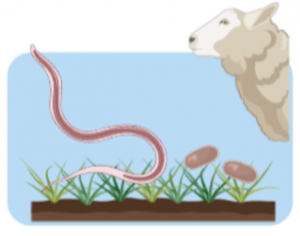
Haemonchus contortus
Haemonchus contortus, also known as the barber’s pole worm, is arguably the most injurious helminth parasite for small ruminants (cattle, sheep, and goat). It was estimated that the annual economic losses caused by H. contortus to the livestock industry accounted for up to 300 million globally. The widespread resistance to most of the commercially available antiparasitic drugs requires an urgent development of new and more effective compounds.
- Genome-wide RNA interference of the nhr gene family in barber’s pole worm identified members crucial for larval viability in vitro. Zhendong Du et al. Infection, Genetics and Evolution 2024. 96w ONE.
- Thermal proteome profiling reveals Haemonchus orphan protein HCO_011565 as a target of the nematicidal small molecule UMW-868. Taki, AC et al. Frontiers in Pharmacology 2022. HTS 384w. ONE.
- Sensitivity of Haemonchus contortus to anthelmintics using different in vitro screening assays: a comparative study. Munguía B et al. Parasites and Vectors 2022. HTS 96w. ONE.
- Chemical characterization and in vitro anthelmintic activity of Citrus bergamia Risso and Citrus X paradisii Macfad essential oil against Haemonchus contortus Kirby isolate. Garbin VP et al. Acta Tropica 2021. 96w. ONE
- High throughput screening of the naturebank ‘marine collection’ in a haemonchus bioassay identifies anthelmintic activity in extracts from a range of sponges from australian waters. Taki, AC et al. Molecules 2021. HTS 384w. ONE.
- High-Throughput Phenotypic Screen of the ‘Pandemic Response Box’ Identifies a Quinoline Derivative with Significant Anthelmintic Activity. Shanley, HT et al. Pharmaceuticals 2022. HTS 384w. ONE.
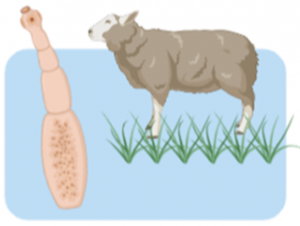
Echinococcus spp.
Cestode parasites cause neglected diseases, such as echinococcosis and cysticercosis, which represent a significant problem in human and animal health. Echinococcosis is a zoonotic disease caused by infection with tiny tapeworms of the genus Echinocococcus. The two most important forms of the disease in humans are cystic echinococcosis (hydatidosis – E. granulosus) and alveolar echinococcosis (E. multilocularis). Echinococcosis is often expensive and complicated to treat and may require extensive surgery and/or prolonged drug therapy. Prevention programs might focus on the deworming of dogs and sheep, which are the definitive hosts.
- Identification and characterization of sirtuin enzymes in cestodes and evaluation of sirtuin inhibitors as new cestocidal molecules. Vaca, HR et al. International Journal for Parasitology 2022. Drug screening 96w. ONE
- Unique pharmacological properties of serotoninergic G-protein coupled receptors from cestodes. Camicia, F et al. PLOS Neglected Tropical Diseases 2018. 96w. ONE
- The nervous and prenervous roles of serotonin in Echinococcus spp. Camicia F et al. International Journal for Parasitology 2013. Protoscolece Motility 96w. ONE.
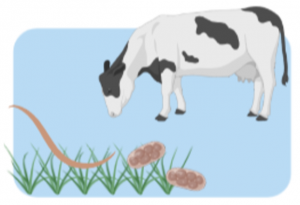
Cooperia oncophora
Cooperia oncophora is one of the most common intestinal nematodes in cattle in temperate regions. Infections with C. oncophora may result in mild clinical symptoms, but can lead to weight loss and damage of the small intestine. Infections are usually treated with broad-spectrum anthelmintics such as benzimidazole, but resistance to these drugs has developed in the last decades and is now very common.
- Screening of a drug repurposing library with a nematode motility assay identifies promising anthelmintic hits against Cooperia oncophora and other ruminant parasites. Maoxuan L et al. Veterinary Parasitology 2019. HTS 96w. ONE.

Ostertagia ostertagi
Ostertagia ostertagi is a common roundworm that causes parasitic gastroenteritis in cattle. It is found worldwide and is economically important to cattle industries, particularly those found in temperate climates. This small brown worm has a direct life cycle with no intermediate hosts, and it is associated with poor weight gain, poor body condition, scour and potentially death if very heavy worm burdens are present.
- Screening of a drug repurposing library with a nematode motility assay identifies promising anthelmintic hits against Cooperia oncophora and other ruminant parasites. Maoxuan L et al. Veterinary Parasitology 2019. HTS 96w. ONE.
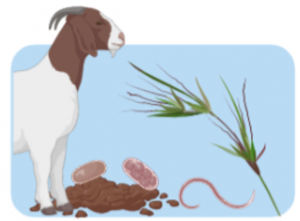
Teladorsagia circumcincta
Teladorsagia circumcincta is one of the most economically important gastrointestinal nematode parasites of sheep and goats in cool temperate regions. This parasite is transmitted through the faecal-oral route, affecting the abomasum and small intestine, cause clinical and economic disease. T. circumcincta resistance to anthelmintics is widespread, thus making control of this parasite highly challenging.
- Screening of a drug repurposing library with a nematode motility assay identifies promising anthelmintic hits against Cooperia oncophora and other ruminant parasites. Maoxuan L et al. Veterinary Parasitology 2019. HTS 96w. ONE.
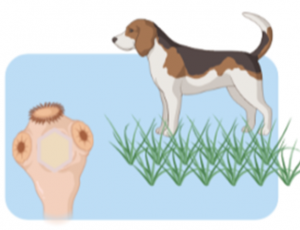
Mesocestoides vogae (M. corti)
Cestodes (tapeworms) in the genus Mesocestoides are common in carnivores but only very rarely infect humans. M. vogae exhibits much potential as a model for the study of the biochemistry, physiology and differentiation of cestodes. Its larval form (tetrathyridium) is readily maintained in the laboratory by intraperitoneal passage through mice, providing a continuous availability of biological material. Also, it is easily cultured and is regarded as non-infective for humans
- The potential for histone deacetylase (HDAC) inhibitors as cestocidal drugs. Vaca, HR. et al. PLOS Neglected Tropical Diseases. 2021. Anthelmintic test. 96w. ONE
- Histone deacetylase enzymes as potential drug targets of Neglected Tropical Diseases caused by cestodes. Vaca, HR et al. International Journal for Parasitology: Drugs and Drug Resistance, 2019. Anthelmintic test. 96w. ONE.
- Unique pharmacological properties of serotoninergic G-protein coupled receptors from cestodes.Camicia, F et al. PLOS Neglected Tropical Diseases 2018. 96w. ONE
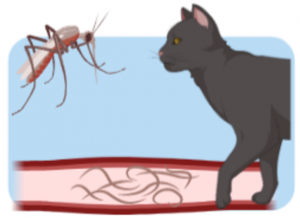
Brugia pahangi
Brugia pahangi is a filarial parasite that is transmitted to domestic cats and dogs in South East Asia when infected mosquitoes take a blood meal. It is used as a model for filarial infections because it is relatively easy to maintain the laboratory. It is closely related to the human parasite Brugia malayi.
- In vitro screening methods for parasites: the wMicroTracker & the Worm Assay. Gunderson E et al. In microPublication Biology 2020. ONE.
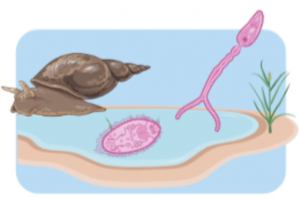
Schistosoma mansoni
Schistosomiasis is infection with blood flukes of the genus Schistosoma, which are acquired transcutaneously by swimming or wading in contaminated freshwater.. It is found primarily across sub-Saharan Africa and some South American countries (Brazil, Venezuela, Suriname) and the Caribbean, with sporadic reports in the Arabian Peninsula. It is classified as a neglected tropical disease.
- In vitro screening methods for parasites: the wMicroTracker & the Worm Assay. Gunderson E et al. In microPublication Biology 2020. ONE.
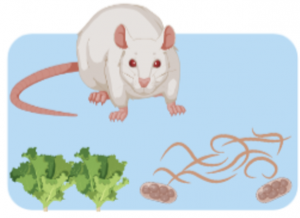
Angiostrongylus cantonensis
Angiostrongylus cantonensis, which is also known as the rat lungworm, causes eosinophilic meningitis and is prevalent in Southeast Asia and tropical Pacific islands. The recognized distribution of the parasite has been increasing over time and infections have been identified in other areas, including Africa, the Caribbean, and the United States. The limited number of anthelmintics available is concerning, especially because of increasing drug resistance.
- A validated high-throughput method for assaying rat lungworm (Angiostrongylus cantonensis) motility when challenged with potentially anthelmintic natural products from Hawaiian fungi. Rollins, RL et al. Parasitology 2022. HTS 96w. ONE.

Anisakis simplex
Anisakis simplex is a parasitic nematode that affects marine animals and can cause anisakiasis in humans. It is found worldwide, particularly in regions with high seafood consumption. This parasite has a complex life cycle involving marine mammals as definitive hosts and crustaceans and fish as intermediate hosts. Human infection occurs when raw or undercooked seafood containing larval stages is ingested. Anisakis simplex can cause severe gastrointestinal symptoms, including abdominal pain, nausea, and vomiting, and may require medical intervention. The presence of this parasite poses significant health risks and economic impacts on the seafood industry.
- Behavioral and physiological changes of anisakis simplex complex third stage larvae upon heating Guan, A et al. Food Control 2024. 96w. MINI.
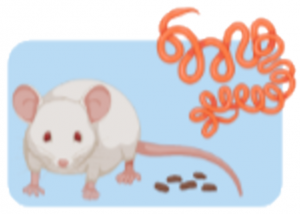
Heligmosomoides polygyrus
Heligmosomoides polygyrus is a natural murine gastrointestinal helminth that is closely related to highly-prevalent human nematode parasites. H. polygyrus is able to survive long-term in the murine host, establishing chronic infections in rodents and altering host immune responses. This nematode is widely used as a gastrointestinal parasitic model in immunological, pharmacological, and toxicological studies.
- Antihelminthic Activity of Lophira Lanceolata on Heligmosomoides polygyrus Using an Automated HighThroughput Method. Cédric, Y et al. Journal of Tropical Medicine 2023. 96w. MINI.
- Nematocidal Activity of Ethanol and Aqueous Extracts of Persea americana Seeds against Heligmosomoides polygyrus using the Worm Microtracker Method. Cédric, Y et al. J Parasitol Res 2023. 96w. MINI.

